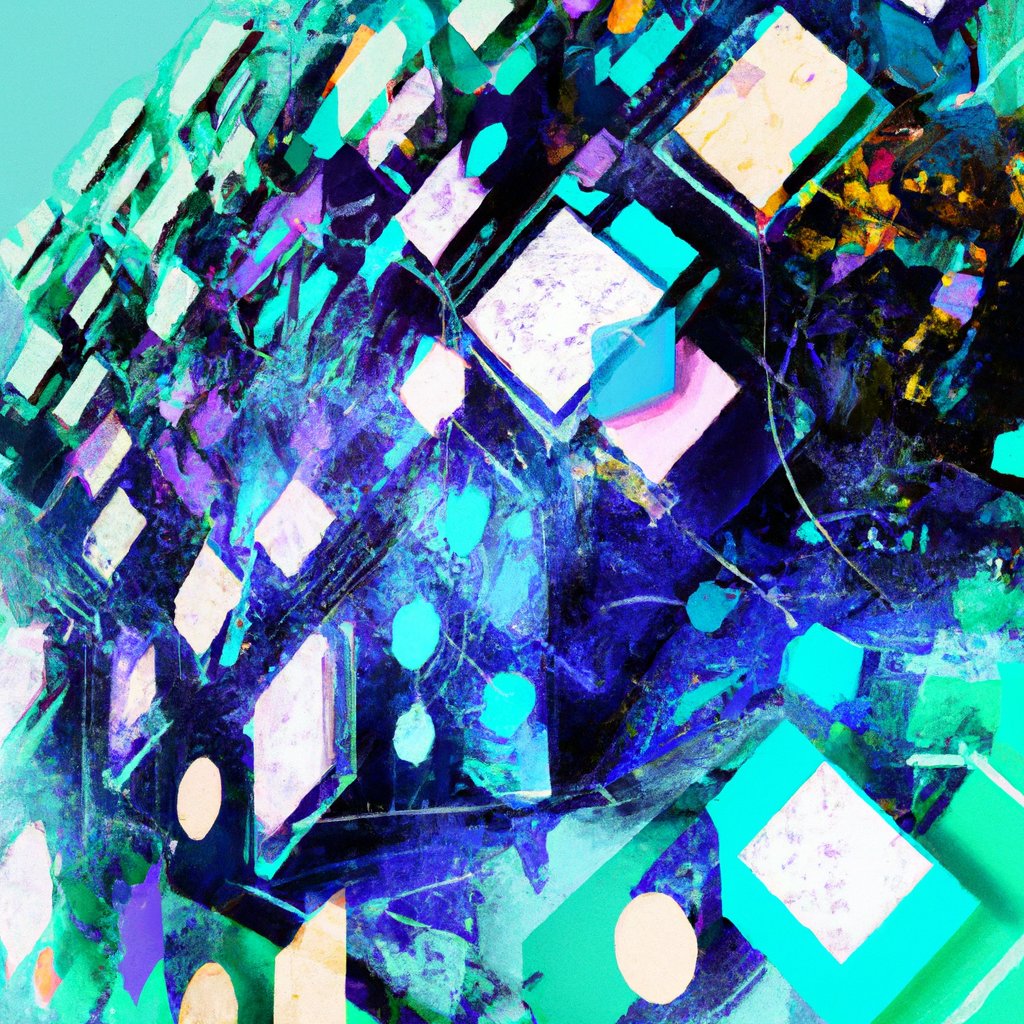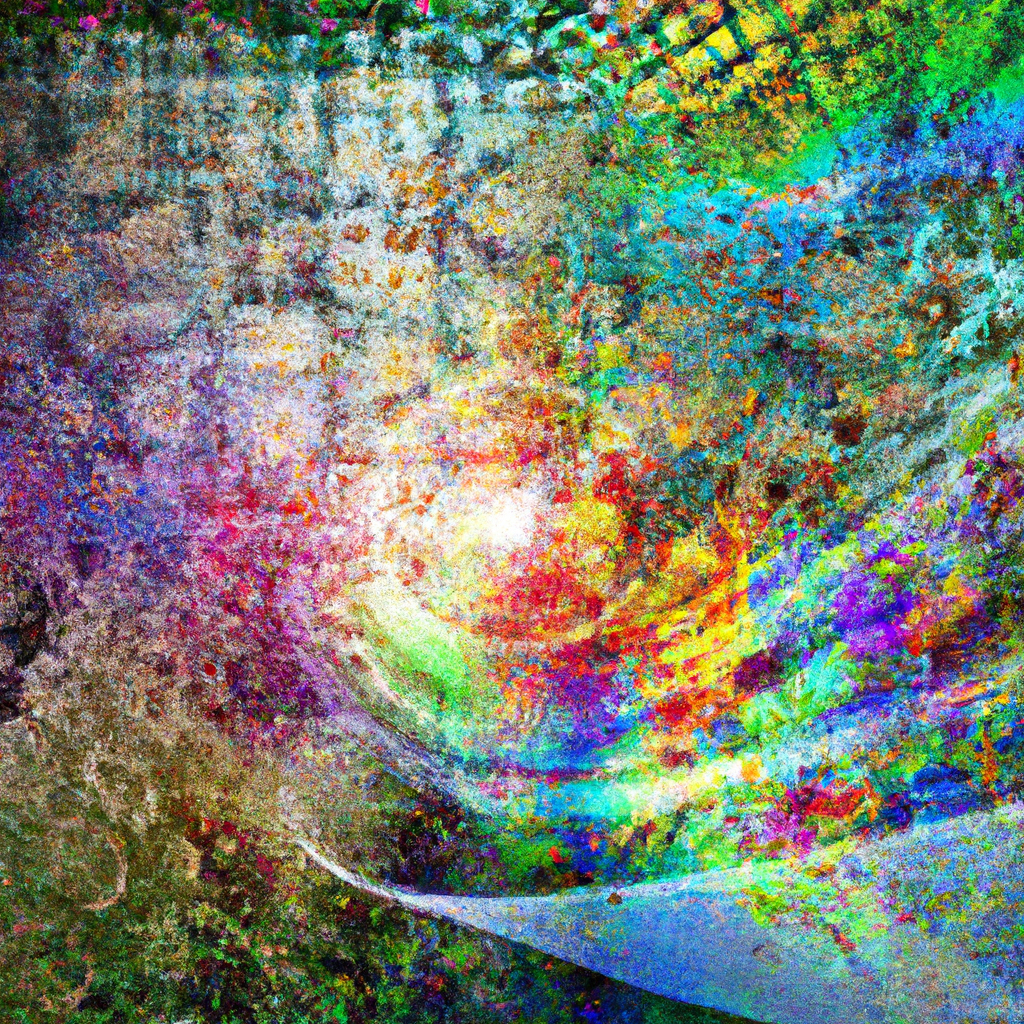Have you ever wondered how artificial intelligence (AI) is able to interpret and analyze visual information and imagery? It’s truly fascinating how this technology has evolved to not only recognize patterns and objects within images but also comprehend the meaning and context behind them. From identifying facial expressions to understanding complex scenes, AI uses a combination of algorithms, deep learning techniques, and massive amounts of data to make sense of the visual world. In this article, we will explore the incredible ways in which AI can decipher and analyze visual information, revolutionizing various industries and enhancing our everyday lives.
Understanding Basics of AI and Visual Data
Definition of Artificial Intelligence
Artificial Intelligence, often referred to as AI, is a branch of computer science that focuses on creating intelligent machines capable of performing tasks that typically require human intelligence. It involves developing algorithms and systems that mimic cognitive functions such as learning, reasoning, problem-solving, and perception. AI is continuously evolving and has the potential to transform various industries, including visual data analysis.
Understanding visual data in the context of AI
Visual data refers to any type of data in the form of images, videos, or graphics. In the context of AI, visual data analysis involves utilizing algorithms and techniques to interpret and understand the content of these visual elements. AI algorithms can process and analyze visual data through techniques like image recognition, object detection, and facial recognition. This enables computers or machines to comprehend and make meaningful insights from visual information, similar to how humans interpret images.
Significance of visual data for AI
Visual data plays a crucial role in AI because it provides valuable information that can be used for various applications. By analyzing visual data, AI systems can detect patterns, identify objects, recognize faces, and extract useful features. This can be applied in fields such as autonomous vehicles, medical imaging, security systems, and entertainment. Visual data analysis enables AI to understand and interact with the world around us, opening up a wide range of possibilities for innovation and advancement.
Role of Machine Learning in Visual Data Analysis
Introduction to Machine Learning
Machine Learning is a subset of AI that focuses on enabling systems to automatically learn and improve from experience without being explicitly programmed. It involves the development of algorithms that can learn from data, identify patterns, and make predictions or decisions. In the context of visual data analysis, Machine Learning plays a pivotal role in training AI models to interpret and analyze images effectively.
How Machine Learning aids in visual data analysis
Machine Learning algorithms are crucial in visual data analysis as they can learn from vast amounts of labeled data to classify or recognize different objects or patterns within images. These algorithms extract relevant features from the visual data and create models that can accurately classify new, unseen images. Through iterative training processes, Machine Learning algorithms improve their performance and enable AI systems to make more accurate predictions or decisions based on visual information.
Different types of Machine Learning algorithms for image analysis
In visual data analysis, various Machine Learning algorithms are used to analyze images effectively. Some commonly used algorithms include:
- Convolutional Neural Networks (CNNs): CNNs excel at image analysis tasks by applying filters to identify relevant patterns and features within images. They are widely used for image classification, object detection, and image segmentation.
- Recurrent Neural Networks (RNNs): RNNs are useful for analyzing sequential visual data, such as videos or time-lapse images. They can capture temporal dependencies and learn patterns over time, making them suitable for tasks like action recognition and video analysis.
- Generative Adversarial Networks (GANs): GANs are a type of Machine Learning algorithm that consists of two networks – a generator and a discriminator. GANs are used for tasks like image generation, image super-resolution, and image manipulation.
These algorithms form the foundation of machine-based visual data analysis and have revolutionized how AI systems interpret and understand visual information.

Neural Networks and Image Recognition
What are Neural Networks?
Neural Networks are computational models inspired by the structure and functioning of biological neural networks found in the human brain. These networks consist of interconnected nodes or artificial neurons that process and transmit information. Neural Networks are widely used in AI, particularly for tasks such as image recognition.
How do Neural Networks aid in image recognition?
Neural Networks play a significant role in image recognition by utilizing their ability to learn complex patterns. In the context of visual data analysis, Neural Networks are trained on a large dataset of labeled images. By analyzing these images, the network learns to identify distinctive features and patterns associated with various objects or classes. Once trained, the Neural Network can accurately classify and recognize objects within new, unseen images.
Types of Neural Networks used for image recognition
Several types of Neural Networks are commonly used for image recognition:
- Feedforward Neural Networks: These networks consist of layers of interconnected neurons, where information flows only in one direction, from the input layer to the output layer. They are often used for simple image classification tasks.
- Convolutional Neural Networks (CNNs): CNNs are specifically designed for image recognition tasks. They utilize convolutional layers to extract relevant features from images, pooling layers to downsample the extracted features, and fully connected layers for classification purposes. CNNs have achieved remarkable success in various image recognition tasks, including object detection and facial recognition.
- Recurrent Neural Networks (RNNs): RNNs are useful for image recognition tasks that involve sequential images or videos. They can capture temporal dependencies and learn patterns over time, allowing them to recognize actions or movements within visual data.
Neural Networks are a key component in image recognition systems powered by AI, enabling machines to understand and interpret visual information with remarkable accuracy.
Principle of Image Analysis by AI
The concept of Feature Extraction in Image Analysis
Feature extraction is a fundamental concept in image analysis, wherein relevant visual information is extracted to represent the image in a more meaningful and concise manner. AI algorithms analyze images and identify distinct features that can help in classification, recognition, or detection tasks. These features can include shapes, textures, colors, edges, or other characteristics that are relevant to the specific analysis being performed.
Understanding the process of Image Classification
Image classification is a process in which AI systems assign a label or category to an image based on its content. The process involves training the AI model with labeled images, where the model learns to associate features within the images to specific classes or categories. Once trained, the model can accurately classify new, unseen images by identifying the relevant features and comparing them to the learned patterns.
The process of object detection in images by AI
Object detection is a technique used in AI to identify and locate specific objects within images. This involves two primary steps: localization and classification. Localization determines the position or bounding box of the object within the image, while classification assigns a label or category to the object. Object detection algorithms leverage AI techniques such as CNNs to detect and classify objects with high accuracy, making them valuable in applications like autonomous vehicles, surveillance systems, and object recognition.

Optical Character Recognition (OCR) in AI
The concept of OCR
Optical Character Recognition (OCR) is a technology that enables AI systems to extract text from images and convert it into machine-readable format. OCR algorithms identify individual characters within an image, recognize their shapes, and translate them into editable text. This allows AI systems to analyze and process text data from various sources such as scanned documents, images, or even handwritten notes.
How does AI apply OCR in image analysis?
AI applies OCR in image analysis by utilizing complex algorithms that can extract textual information from images. By combining techniques like image preprocessing, character segmentation, and character recognition, AI systems can accurately convert images containing text into digital, editable content. This enables AI to analyze and process text data, opening up possibilities for applications such as document analysis, automated data entry, and text-based searching within images.
Real-world applications of OCR in AI
OCR powered by AI has found numerous real-world applications across various industries. Some notable examples include:
- Document Digitization: AI-powered OCR enables the digitization of physical documents, making them searchable and editable. This improves efficiency in tasks like document management, archiving, and information retrieval.
- Automatic Data Entry: AI systems with OCR capabilities can automatically extract data from documents, invoices, and forms, eliminating the need for manual data entry. This reduces errors and saves time in tasks involving large volumes of data.
- Translation Services: OCR algorithms combined with natural language processing allow AI systems to automatically translate text within images into different languages, facilitating multilingual communication and information exchange.
OCR technology continues to evolve, and with advancements in AI, it holds great potential for further enhancing image analysis capabilities.
AI’s Role in Facial Recognition
The process of facial recognition by AI
Facial recognition is a technology that AI systems use to identify and authenticate individuals based on their facial features. The process involves three main steps: face detection, face alignment, and face recognition. AI algorithms locate and isolate faces within images or video frames, standardize their positioning and scale for accurate analysis, and then match the facial features with a database of known individuals. Facial recognition technology has widespread applications in security systems, personalization features, and social media platforms.
Applications of facial recognition in various fields
Facial recognition technology powered by AI has numerous applications across various industries:
- Security and Surveillance: AI-based facial recognition systems are widely used in surveillance and security applications to identify individuals for access control or identification purposes. They enhance security levels, automate access control, and assist in criminal investigations.
- Personalization and User Experience: Facial recognition enables AI systems to personalize user experiences by recognizing individuals and adapting content or settings accordingly. This is seen in applications like smartphone unlocking, personalized marketing, and recommendation systems.
- Healthcare and Medical Diagnosis: Facial recognition technology can aid in diagnosing medical conditions by analyzing facial features associated with certain diseases or conditions. AI systems can detect symptoms or indicators through facial analysis, assisting in early detection and treatment.
The use of facial recognition in various fields is rapidly expanding, driven by advancements in AI algorithms and the increasing availability of high-quality visual data.
Challenges and ethical considerations in facial recognition
While facial recognition technology offers many benefits, it also raises concerns and ethical considerations. Some key challenges include:
- Privacy and Surveillance: The widespread use of facial recognition raises privacy concerns as it involves capturing, storing, and analyzing personal visual data. There is a need for regulations and policies to protect individuals’ privacy rights.
- Bias and Discrimination: Facial recognition algorithms can exhibit biases, leading to potential discriminatory outcomes, particularly against certain racial or ethnic groups. Efforts are being made to mitigate such biases through improved training data and algorithmic fairness.
- Consent and Consent Management: The use of facial recognition technology requires obtaining the consent of individuals whose data is being captured and analyzed. Implementing transparent consent management practices is essential to protect individuals’ rights and ensure ethical use of the technology.
Addressing these challenges and ensuring responsible deployment of facial recognition technology is crucial for building trust and maximizing its potential benefits.

Convolutional Neural Networks (CNNs) in Image Analysis
Introduction to Convolutional Neural Networks
Convolutional Neural Networks (CNNs) are a specialized type of Neural Network architecture designed for processing and analyzing visual data, particularly images. CNNs are inspired by the visual cortex in humans and are highly effective in tasks such as image recognition, object detection, and image segmentation.
Role of CNNs in Image Analysis
CNNs play a vital role in image analysis tasks due to their unique architecture and capabilities. Unlike traditional Neural Networks, CNNs use convolutional layers that apply filters to extract relevant features from images. These features, once extracted, are passed through pooling layers to downsample and retain essential information. Finally, fully connected layers perform classification or prediction based on the extracted features. CNNs have demonstrated exceptional performance in various image analysis tasks, achieving state-of-the-art results in fields like computer vision and medical imaging.
Difference between CNNs and traditional Neural Networks
The key difference between CNNs and traditional Neural Networks lies in their structure and design. CNNs are specifically designed for processing grid-like data such as images, where the spatial relationships between pixels matter. They utilize convolutions, pooling, and learnable filters to efficiently extract patterns and features from images. In contrast, traditional Neural Networks typically consist of fully connected layers, treating input data as a flat vector without considering its spatial arrangement. This makes CNNs more suitable for image analysis tasks that require preserving spatial information and local features.
The development and advancement of CNNs have revolutionized image analysis, allowing AI systems to achieve remarkable accuracy and performance in visual tasks.
Role of AI in Image Processing and Enhancement
The process of AI-powered image processing
AI plays a significant role in image processing by leveraging advanced algorithms and techniques to enhance or manipulate images. Image processing tasks involve operations like noise reduction, sharpening, resizing, color enhancement, and image restoration. By analyzing visual data and applying sophisticated AI models, image processing algorithms can automatically enhance images or perform complex transformations.
Methods used by AI for image enhancement
AI employs various methods for image enhancement, using algorithms to analyze visual data and apply transformations. Some notable techniques include:
- Denoising: AI algorithms can effectively reduce noise in images by identifying and suppressing unwanted artifacts or disturbances.
- Super-resolution: AI models can enhance image resolution by predicting and generating higher-resolution versions of low-resolution images. This is beneficial in applications like medical imaging and surveillance.
- Colorization: AI algorithms can add color to black and white images by learning from large datasets of colored images. This allows for the restoration of historical photographs or the enhancement of monochrome images.
AI-powered image processing techniques have revolutionized industries such as photography, entertainment, medical imaging, and satellite imaging, enabling the creation of high-quality visuals and extracting valuable information from images.
Applications of AI in image processing and enhancement
The applications of AI in image processing and enhancement are diverse and encompasses various fields:
- Photography and Videography: AI algorithms are used in image editing software to enhance photographs, remove imperfections, or apply artistic effects. In videography, AI-based image stabilization can reduce blur and improve video quality.
- Medical Imaging: AI plays a crucial role in medical imaging by enhancing image quality, aiding in the diagnosis and treatment of diseases. AI models can improve image resolution, noise reduction, and even detect abnormalities or tumors within medical images.
- Satellite Imaging: AI-powered image processing is instrumental in satellite imaging for tasks such as land cover classification, object detection, and tracking changes in the Earth’s surface. This enables applications in areas like urban planning, environmental monitoring, and disaster management.
The integration of AI into image processing and enhancement has significantly enriched the capabilities of visual data analysis, leading to advancements in various sectors.

AI in Medical Imaging Analysis
Importance of AI in medical imaging
AI has emerged as a transformative force in medical imaging analysis. The integration of AI techniques with medical imaging has the potential to revolutionize healthcare by improving diagnostic accuracy, enabling early detection of diseases, and enhancing treatment planning processes. By analyzing complex visual data, AI systems can assist healthcare professionals in making informed decisions, leading to better patient outcomes.
AI techniques used in the analysis of medical images
AI techniques employed in medical imaging analysis encompass a range of methodologies:
- Computer-Aided Diagnosis: AI models are trained to analyze medical images such as X-rays, CT scans, or MRIs and assist radiologists in detecting and diagnosing abnormalities or diseases. These AI systems can provide valuable insights, speeding up the diagnostic process and reducing the risk of human error.
- Image Segmentation: AI algorithms can segment medical images to identify and delineate specific regions or structures of interest. This aids in accurate measurements, tumor detection, or organ delineation for treatment planning.
- Disease Classification: AI models can classify medical images into specific disease categories based on learned patterns and features. This enables automated diagnosis, making healthcare more accessible and efficient.
The integration of AI in medical imaging analysis holds immense potential to improve patient care, enhance clinical workflows, and advance medical research and innovation.
Impact and future implications of AI in medical imaging
The impact of AI in medical imaging analysis is already evident, with numerous success stories and advancements. AI has demonstrated comparable or even superior performance to human experts in tasks like breast cancer detection, lung disease diagnosis, and identifying eye diseases. The future implications of AI in medical imaging are vast, including:
- Enhanced Precision and Efficiency: AI systems can assist radiologists in analyzing medical images more accurately and efficiently. This can lead to faster diagnosis, reduced interpretation variability, and improved patient management.
- Personalized Medicine: AI models trained on large-scale medical imaging data can analyze patient-specific factors and provide personalized treatment recommendations. This can optimize treatment plans, predict prognosis, and improve patient outcomes.
- Research and Knowledge Discovery: AI can help researchers analyze vast amounts of medical imaging data, identify patterns, and discover new insights. This can catalyze medical research and contribute to a better understanding of diseases and their management.
The future of AI in medical imaging holds promise for transformative advancements, but it also necessitates addressing challenges related to data quality, regulatory considerations, and ethical usage to ensure patient safety and privacy.
Challenges and Future of AI in Image Analysis
Current challenges in AI image analysis
While AI has made significant strides in image analysis, several challenges persist:
- Data Quality and Quantity: AI algorithms require large amounts of high-quality labeled data for effective training. Obtaining and curating such datasets can be a challenging and time-consuming task.
- Interpretability and Explainability: AI models often act as black boxes, meaning their decision-making process is obscure. This lack of interpretability can affect trust and limits the adoption of AI systems in critical areas where explanations are essential.
- Ethical Considerations: The use of AI in image analysis raises ethical concerns regarding privacy, surveillance, bias, and data governance. There is a growing need for regulatory frameworks, standards, and ethical guidelines to address these concerns.
Potential future developments in AI and image analysis
The future of AI in image analysis holds great promise, with several potential developments on the horizon:
- Advancements in Deep Learning: Deep Learning, a subset of AI, is expected to continue driving breakthroughs in image analysis. Further advancements in Neural Networks, such as more efficient architectures and novel training techniques, will lead to improved accuracy and efficiency.
- Explainable AI: Efforts are being made to develop AI models that are more interpretable and explainable. This involves designing algorithms and techniques that can provide understandable explanations for the decisions made by AI systems, fostering trust and transparency.
- Multi-Modal Analysis: AI researchers are exploring the integration of multiple types of visual data, such as images, videos, and sensor data, for comprehensive analysis. This multi-modal approach can provide richer insights and a more holistic understanding of complex visual scenes.
As AI continues to evolve, innovations in image analysis will likely have a profound impact on diverse industries, transforming how we perceive, interpret, and interact with visual data.
Ethical and privacy concerns in AI and image analysis
As the capabilities of AI in image analysis expand, it is essential to address ethical and privacy concerns:
- Privacy Protection: The use of AI algorithms to analyze visual data raises concerns about the collection, storage, and use of personal information. Robust privacy frameworks must be established to protect individuals’ rights and ensure responsible use of visual data.
- Bias and Fairness: AI algorithms can inadvertently inherit biases present in training data, leading to unfair outcomes or discriminatory practices. Efforts should focus on developing unbiased and fair AI models, including diverse datasets and thorough validation processes.
- Transparency and Accountability: There is a need for transparency in AI algorithms and systems, including regulatory compliance and accountability frameworks. This will foster trust and enable effective governance and oversight of AI-powered image analysis.
By proactively addressing these concerns and adopting ethical practices, we can leverage the potential of AI in image analysis while upholding individual rights and societal values.











